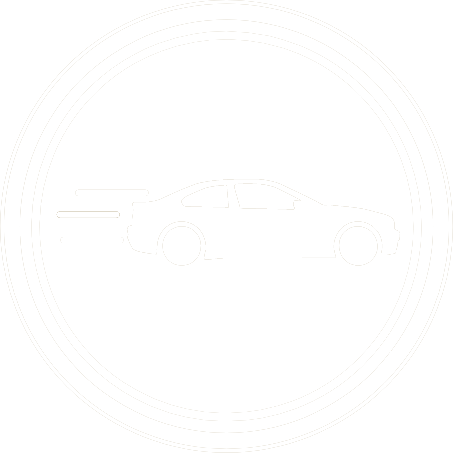The Consumer Electronics Show (CES), held annually in Las Vegas, always displays a stunning array of technology steadily transforming mobility into a surreal experience and the automobile into the kind of figment that not even sci-fi could have even imagined a few years ago.
There is so much on show, both as concepts and ready for production, that doing it all justice would make ‘War and Peace’ look like a five-minute read – so CHANGECARS has cherry-picked a few of the goodies from this year's show in no particular order.
Mercedes-Benz

The headline exhibit from Mercedes-Benz was the new integrated MBUX Virtual Assistant. It uses advanced software and generative AI to create an even more natural and intuitive relationship with the car, with proactive support that makes life easier.
This development takes the ‘Hey Mercedes’ voice assistant into a whole new visual dimension made with Unity’s high-resolution game-engine graphics. Running on the Mercedes-Benz Operating System (MB.OS) developed in-house, its rollout starts with the vehicles on the forthcoming MMA platform (Mercedes-Benz Modular Architecture).
“Through advances in artificial intelligence, tomorrow’s Mercedes-Benz will know its driver like never before. It will enhance and complement our customers’ lives – in their cars and in other areas too. We have already made strong progress on this journey. The latest proof points on show at CES provide an exciting glimpse of what lies ahead,” says Markus Schäfer, member of the board of management at Mercedes-Benz Group AG, Chief Technology Officer.
The MBUX Virtual Assistant is a further development of the system first showcased in the VISION EQXX. It uses generative AI and initiative-taking intelligence to make life as easy, convenient and comfortable as possible.
For instance, it can offer helpful suggestions based on learned behaviour and situational context. Examples include playing the latest news in the morning or initiating a preferred massage programme at the end of the working day. And, if the driver is running late for a meeting entered into the calendar, the system can offer to dial in directly from the car.
“The Mercedes-Benz user experience of tomorrow will be hyper-personalised. With generative AI, our MBUX Virtual Assistant brings more trust and empathy to the relationship between car and driver. Thanks to our MB.OS chip-to-cloud architecture, our future vehicles will provide customers with exactly what they need when they need it,” says Magnus Östberg, chief software officer, Mercedes-Benz AG.
What makes it all a little sci-fi scary is the fact the assistant answers questions based on general knowledge and can also ask intelligent questions to clarify intent and draw conclusions. By being predictive, the generative assistant can also offer proactive suggestions and routines based on situational context and learned behaviour. At the same time, a more emotional neural voice that can express different speaking styles generates a sense of empathy.
Mercedes-AMG announced the launch of MBUX SOUND DRIVE – a partnership with creative artist, innovator and entrepreneur, will.i.am, to deliver an interactive music experience. The technology uses software that allows the music to react to the way the car is being driven and turns the car into a virtual musical instrument.

You do not need AI to find your perfect car - click here to see the great selection on CHANGECARS!
Using a suite of sensors and advanced software, MBUX SOUND DRIVE interprets various dynamic inputs, such as recuperation, acceleration, steering, and braking, and converts them into musical expressions, allowing the driver to 'compose' in real-time just by driving.
“At Mercedes-Benz, we want digital innovation to bring a smile to our customers’ faces through exciting new features that make a real difference to every journey. With MBUX SOUND DRIVE, AMG drivers are in control of the way their music sounds. It makes in-car entertainment much more immersive,” says Schäfer.
Honda

Looking for a pre-owned Honda- here it is
Honda unveiled the ‘Honda 0 Series’, a new EV series Honda it will launch globally starting in 2026, with the world premiere of two concept models, namely Saloon and Space-Hub.
Honda aiming to realise carbon neutrality for all products and corporate activities Honda is involved in by 2050. To this end, the company is pursuing electrification to achieve its automobile electrification target of “increasing the ratio of EV and FCEV sales to 100% globally by 2040.”
The Honda 0 Series is a new EV series that goes back to the starting point of Honda – hence the ‘0’ name –, including the pursuit of the M/M concept, the joy of driving and the joy of the freedom of mobility, with a new value for EVs by transcending the constraints of being a ‘thick and heavy’ vehicle through an increase in battery capacity, as well as a large body and platform necessary to accommodate such battery capacity.
Honda describes this new approach to EV development as ’Thin, Light, and Wise’.
In 2021, Honda put Level 3 automated driving into practical use by introducing the Legend equipped with Honda SENSING Elite that includes an advanced technology qualifying for Level 3 automated driving (conditional automated driving in a limited area).
The Honda 0 Series will feature an ADAS (advanced driver-assistive system) that uses the technologies of Honda SENSING Elite.
Through connected technologies centred on Honda’s original vehicle OS, the Honda 0 Series models will aim to offer the value of “fun to drive, fun to use and fun to be connected.”
With the utilisation of AI and big data, the vehicle will learn the user’s preferences such as music, as well as a driver’s behaviours and tendencies while driving, and will make various suggestions. Moreover, the vehicle will provide information about the surrounding areas and route guidance for the ‘last mile’ to the final destination that users have to travel on their own after getting off the vehicle.
Honda 0 Series models will feature e-Axles with excellent power conversion efficiency and packaging, lightweight, high-density battery packs and excellent aerodynamic performance, targeting a sufficient range while minimising the battery capacity loaded on the vehicle.
Kia

Kia revealed its Platform Beyond Vehicle (PBV) future strategy will initially be based around the introduction of an all-new modular vehicle, previewed by the Kia Concept PV5.
Kia PBVs are a total mobility solution that combine fit-for-purpose EVs with advanced software solutions based on the Hyundai Motor Group’s software-to-everything, or SDx, strategy. As a Platform Beyond Vehicle, Kia PBVs will open the door to new businesses and lifestyles by redefining the concept of space thanks to advanced, tailored interiors that provide ultimate freedom and flexibility.
“Kia’s PBV business represents our vision of going beyond the traditional concept of automobiles by fulfilling the unmet needs of diverse customers and communities through optimised vehicles and services catering to specific market and business circumstances,” says Ho Sung Song, Kia president and CEO.
“Kia PBVs will be an enabler of business innovation thanks to our customer-centric management system, EV mass production expertise, and the Hyundai Motor Group’s rapidly developing SDx strategy and related future businesses. We are excited to show we are fully prepared to become the first mover in the global PBV market.”
Phase one will see the introduction of the Kia PV5, an EV optimised for operations such as hailing, delivery and utilities that features conversion capability for diverse customer needs. Enhanced data connectivity between vehicles and external data such as route or delivery information will enable convenient operation of multiple vehicles as a software-defined fleet. This emergence of customised business fleets and PBV-specific solutions means less downtime and enhanced cost-effectiveness.
Phase two will see PBVs will evolve into AI-based mobility platforms that use data to interact with users and ensure the vehicles are always up to date. An integrated PBV solution will provide a customised, seamless experience across devices and software. Meanwhile, new forms of business linked with robotics and other future technologies will emerge.
In phase three, Kia PBVs will evolve and become life platforms that turn any inspiration into reality. Connected self-driving vehicles will be managed as part of a single smart city operating system. With the emergence of a hyper-connected world where people, PBVs and social infrastructure are seamlessly linked, we will open the door to completely new lifestyles.

Pre-owned Kia SUV's are right here
In line with Phase One, various versions of the PV5 will be available, including Basic, Van, High Roof, and Chassis Cab versions. In the future, Kia also plans to introduce a Robotaxi model developed with Motional (a joint venture between HMG and Aptiv), which aims to provide an autonomous hailing experience for passengers.
“Kia PBVs will initiate a new era of seamless everyday business and lifestyle solutions. We hope to make our customers’ lives easier and better, whether they are stationary or on the move, offering exceptional flexibility and customisation through radical modularisation,” says Karim Habib, executive vice president and head of Kia Global Design.
“Untethered to any fixed place, and unbounded by the traditional restrictions of space, Kia PBVs offer users a blank canvas to reimagine their lifestyles and workstyles.”
Hyundai
"At Hyundai, we believe science and humanity are two sides of the same coin; that advanced technology should also make people’s lives better,” says Jay Chang, president and CEO of Hyundai Motor Company. “Clean hydrogen should be for everyone, powering everything, and available everywhere.”
Hyundai Motor Group has already announced a commitment to achieve carbon neutrality by 2050, substantiated by a clear roadmap to use 100% renewable energy in its overseas factories by 2045 and in every Group entity by 2050. Hydrogen energy will play a prominent role in achieving those objectives.

Hydrogen plays a crucial role in Hyundai’s sustainability roadmap as it is a clean energy source, with water being its only byproduct when used as fuel and its hydrogen solutions go beyond passenger cars, trucks and buses to include trams, special equipment, vessels, power generators and advanced air mobility. The company is driving the energy transition as a major hydrogen off-taker.
Traditionally, automakers have focused on vehicle utilisation, while other industries have covered energy production, storage and transportation. This approach has led to a slow and challenging energy transition process.
Hyundai aims to overcome these limitations by combining and integrating its Group-wide hydrogen competencies to revolutionise the energy transition and accelerate the establishment of a hydrogen society and Chang Hwan Kim, senior vice president and head of Hydrogen Fuel Cell and Battery Development, explained Hyundai is also developing megawatt-scale polymer electrolyte membrane (PEM) electrolyser manufacturing capabilities for green hydrogen production, which is expected to commercialise within the next few years.
BMW

The BMW Group demonstrated augmented reality (AR) glasses where, users wearing the glasses, can see how navigation instructions, hazard warnings, entertainment content, information on charging stations and supporting visualisations in parking situations are embedded perfectly into the real-world environment by the ‘XREAL Air 2’.
AR and mixed reality (MR) devices will become increasingly popular in the next few years, thanks to technological advances and entry-level models that are more affordable for customers. In future, AR and MR devices will be able to offer both drivers and passengers enhanced information and enjoyable experiences to complement the displays fitted in the vehicle.
“Thanks to the recent research collaborations with Meta Reality Labs and XREAL, we have made considerable progress in our preparations for integrating external XR devices into our driving experience in production models. We are proud to be leading the way here and are well prepared to offer our customers breathtaking XR experiences in the future,” says Peter Lehnert, vice president Research, New Technologies, and Innovations Digital Car at the BMW Group.
Colin Windell
proudly CHANGECARS











